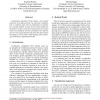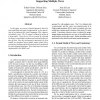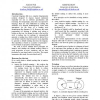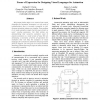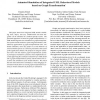VL
2005
IEEE
14 years 5 months ago
2005
IEEE
We present a human-centered gestural system for musical improvisation, MIND. We demonstrate the relationship between music composition and programming. Preliminary field data from...
VL
2005
IEEE
14 years 5 months ago
2005
IEEE
Evolutionary algorithms (EAs) produce a vast amount of data by recurring processes, e.g., selection, recombination, or mutation, that work on populations of solutions for a speciļ...
VL
2005
IEEE
14 years 5 months ago
2005
IEEE
In this paper we present a formal approach, based on meta-modelling and graph transformation, to the generation of environments for visual languages (VLs) supporting multiple view...
VL
2005
IEEE
14 years 5 months ago
2005
IEEE
VL
2005
IEEE
14 years 5 months ago
2005
IEEE
Large software projects often require a programmer to make changes to unfamiliar source code. This paper describes a set of tools, called Team Tracks, designed to ease program com...
VL
2005
IEEE
14 years 5 months ago
2005
IEEE
We present further steps in our research into visual languages for animation. Animation is a rich mode of communication that is currently accessible to few, because animation syst...
VL
2005
IEEE
14 years 5 months ago
2005
IEEE
There are many common spreadsheet errors that traditional spreadsheet systems do not help users find. This paper presents a statically-typed spreadsheet language that adds additio...
VL
2005
IEEE
14 years 5 months ago
2005
IEEE
This paper shows how integrated UML models combining class, object, use-case, collaboration and state diagrams can be animated in a domain-speciļ¬c layout. The presented approach...
VL
2005
IEEE
14 years 5 months ago
2005
IEEE
VL
2005
IEEE
14 years 5 months ago
2005
IEEE
We present HyperFlow, a novel visual language for information analysis that combines features from visual dataflow and visual query languages into a unified framework. HyperFlow i...

